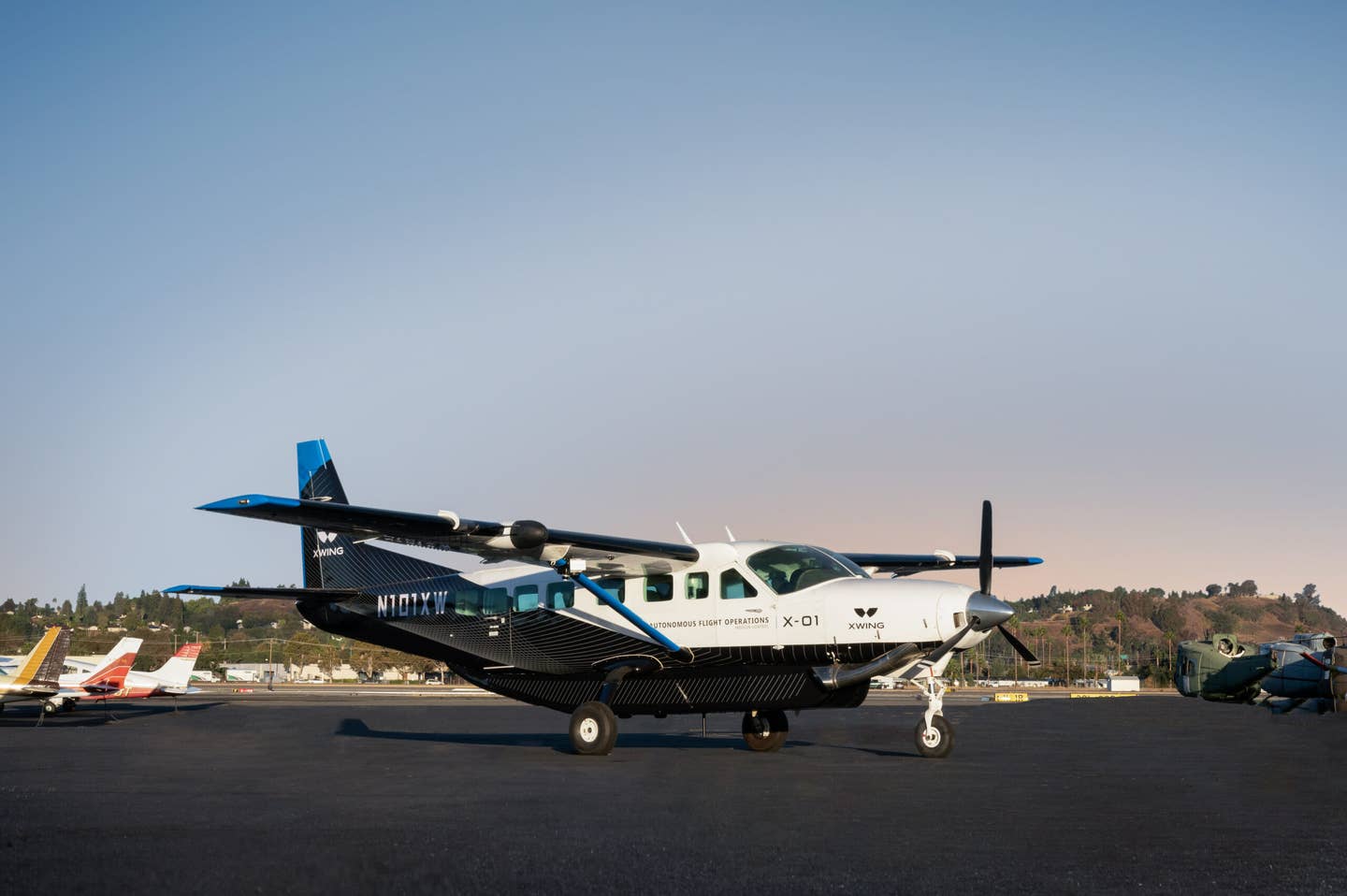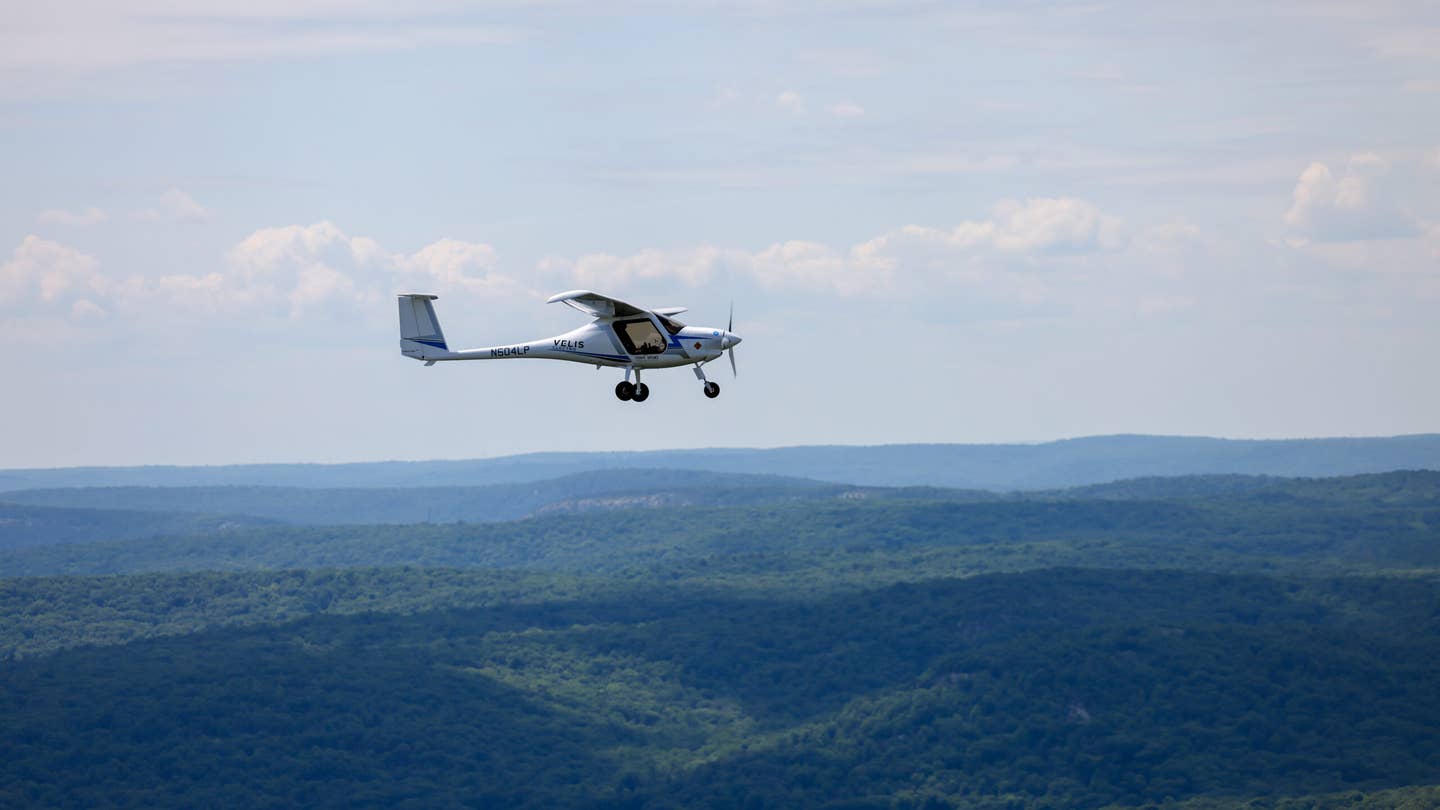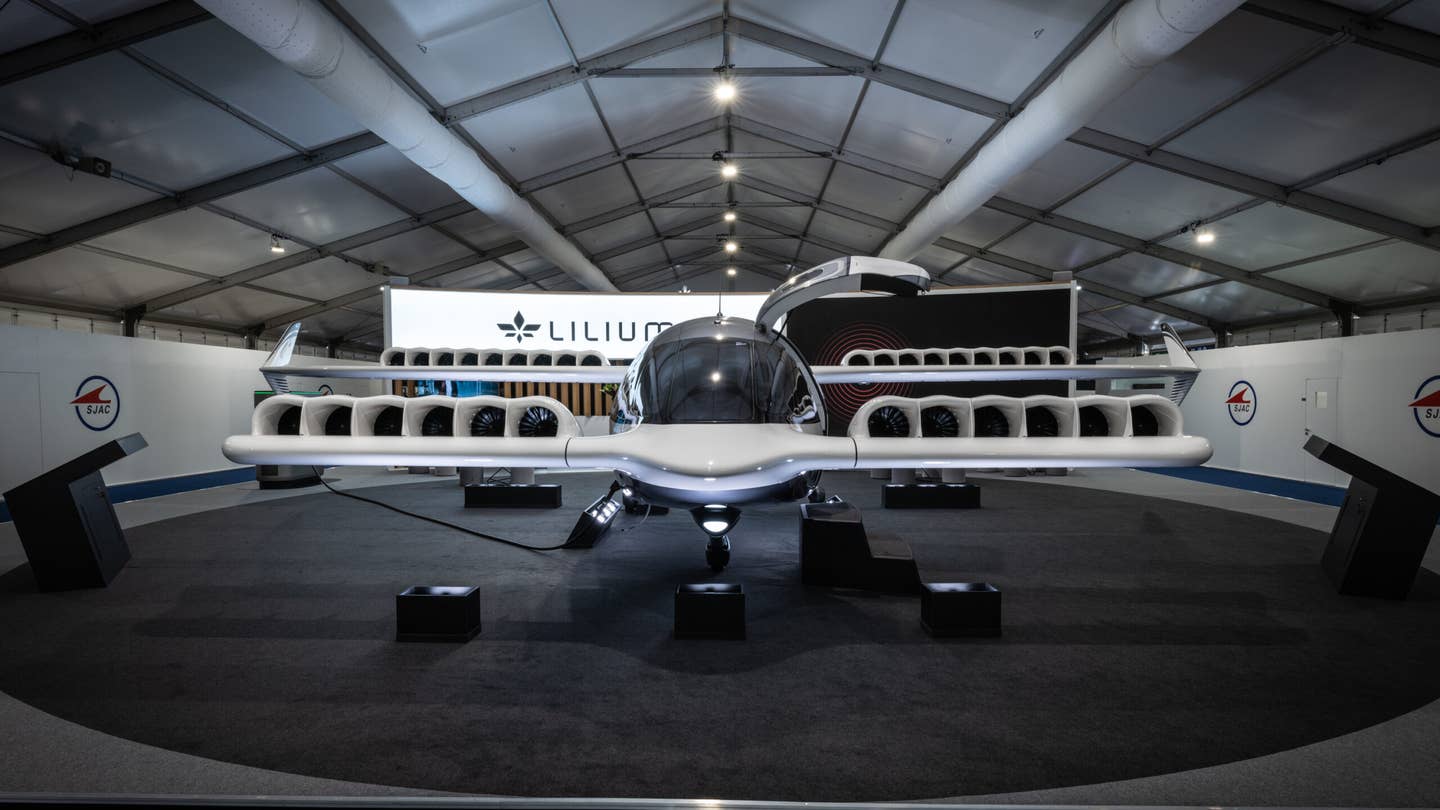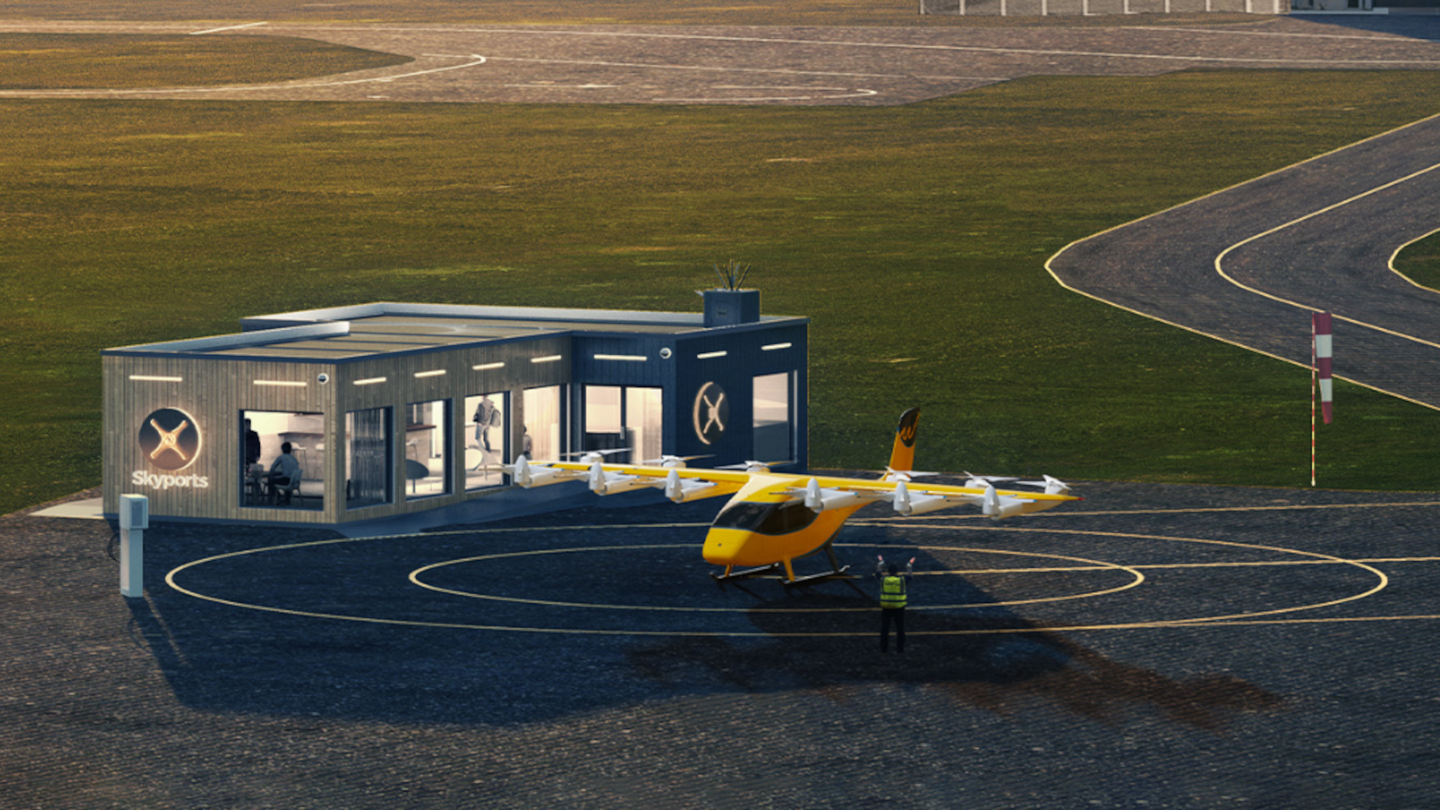NASA Awards Xwing Contract to Develop Autonomous Flight Safety Management System
Xwing will share flight and ground operations data, algorithms, and pertinent autonomous subject matter expertise with NASA. In turn, NASA researchers will use the information to develop a safety management system (SMS) where regular pilot-less flights can be integrated into the national airspace system.

In February 2021, Xwing demonstrated a fully automated gate-to-gate operation of a Cessna Caravan turboprop retrofitted with their technology. [Courtesy: Xwing]
NASA awarded Xwing, the autonomous aircraft company, a contract to develop a set of safety processes and procedures that would make integrating non-piloted aircraft in the national airspace system (NAS) easier.
As part of the deal, San-Francisco-based Xwing will share flight and ground operations data, algorithms, and pertinent autonomous subject matter expertise with NASA. In turn, NASA researchers will use the information to develop a safety management system (SMS) where regular pilotless flights can be integrated into the NAS. Additionally, NASA will study the risks associated with the fast-growing air mobility sectors that could soon feature electric vertical takeoff and landing aircraft (eVTOLS), autonomous and beyond visual line of sight (BVLOS) drones.
Marc Piette, Xwing’s founder and CEO, explained to FLYING that sharing his company’s data with NASA was essential in accelerating the adoption of autonomous flight in the industry.
Though this isn’t Xwing’s and NASA’s first joint effort, Piette said. “We’re excited to work with NASA—it’s a good thing for the economy and country in general,” he added. “We’ll be able to increase safety, access to goods, and rural transportation in general.”
Fast-Tracking Innovation
Why would Xwing share its data with NASA? The overall program is part of NASA’s System-Wide Safety (SWS) Project that the agency launched in 2018 to grasp the impact these advanced aviation systems had on safety.
“Emerging aviation relies heavily on advanced automation to ensure safety, and Xwing is working to bring novel, safe aviation opportunities to the American public," said Misty Davies, NASA’s SWS project manager.
While NASA is predominantly thought of as a space agency, there are branches that focus on terrestrial aeronautics and work directly with the FAA, Jesse Kallman, vice-president of Commercialization & Strategy at Xwing, told FLYING. Because of its vast resources and ability to facilitate collaboration even across competing companies, NASA might be able to serve as the catalyst that speeds up the pace and commercial deployment of new aviation technologies at a large scale, Kallman added.
From its findings, NASA can develop and deploy tools, technologies, and best practices to limit the risks these new systems will create as they blend into the existing airspace ecosystem. For Xwing, the benefit is that they get to leverage NASA’s technical capabilities to get its autonomous product to market.
“Both the data we provide to NASA and data we receive will enable us each to advance our capabilities and build a more robust safety case for the technology,” Kallman said.
Xwing’s Fast-Growing Operation
In February 2021, Xwing demonstrated a fully automated gate-to-gate operation of a Cessna Caravan turboprop retrofitted with their technology. In a video shared on social media that captured the flight, the experimental Cessna 208B Grand Caravan exited its hangar at Buchanan Field (CCA) in Concord, California. It then taxied, departed, landed, and taxied back to the hangar entirely on its own.
Fast-forward, the company is a Part 135 air carrier without the autonomous technology on its aircraft. Recently Xwing expanded its fleet to operate more than 400 weekly human-piloted cargo flights for UPS. The airplanes are retrofitted with sensors and tracking software to collect data. That’s the data being shared with NASA.
How NASA Will Use The Data
The NASA contract will last three years. The data Xwing provides is expected to help NASA understand the real-world challenges that the industry is facing, NASA’s Davis said.
Is it the future of aviation? One Bay Area company is looking to take flights to new heights without pilots on board. @ScottMcGrew has an in-depth look Thursday morning on #TodayintheBay. Tune in or watch here: https://t.co/30BiMjdHg3 pic.twitter.com/pl2OKMXm4R
— NBC Bay Area (@nbcbayarea) August 10, 2022
“It’s really about the integration, and not so much the technology onboard the aircraft, but how they operate within a real-world operational setting with ground crew, ground control, and air traffic control in general,” Piette said.
For instance, he said there are inefficiencies—like how repositioning flights are conducted. Showing a slide from the data they’ve collected from their cargo flights, the map shows that pilots rarely get to fly the most efficient routes. There are delays on the ground due to inefficient taxiing and the cargo loading process, which are all jobs that pilots and other airport personnel are required to do.
“All these things need to be handled gracefully once you move to a remote operator,” Piette said.
A significant feature of the contract is that NASA will use the data to identify risks and hazards related to runway detection, identification, and vision-based landing. Presently, only airports with ILS-Category 3 approaches have dependable autoland capabilities. Still, GPS-enabled standard RNAV approaches, which typically have a higher margin of error and, therefore, are less accurate than an ILS, are more predominant. So, if the data Xwing collects and shares with NASA helps them find a way to ensure similar levels of accuracy with GPS as with the ILS in any weather condition or terrain scenario, it would be a big unlock for their program.
Timing is Crucial
Broadly, Xwing’s data, including emergency procedures, airspace communications, and infrastructure needs—such as on-the-ground support—will help NASA’s research to build new infrastructure standards, pilot/operator certification standards, and other best practices. The NASA Aeronautics Research Institute (NARI) might also work with Xwing to determine the supply chain challenges that make pilotless operations challenging.
The timing is crucial. Last month, a group of aviation business leaders testified before a U.S. Senate Subcommittee on Aviation Safety, Operations, and Innovation about the progress of introducing new technologies into the national airspace system. As the government looks to provide funding for the FAA to operate through its FAA Reauthorization Act in 2023, leaders from various sectors—pilots, government, policymakers, and manufacturers—continue to try to get on the same page about emerging technologies.

Subscribe to Our Newsletter
Get the latest FLYING stories delivered directly to your inbox






